Vaulting is an equestrian sport involving gymnastics on a moving horse. Flags, mills, scissors, and stands are moves that vaulters perform. While most people have only seen vaulting at a circus, it’s an activity derived from ancient Crete and Rome using bulls and horses. Vaulting today is recognized for teaching coordination, teamwork, balance, strength, and creativity.
What Do You Need for Vaulting?
Before getting on a horse, vaulting positions should be mastered on a mat and a vaulting barrel. When vaulters get proficient, they move to a horse, ensuring the need for a team. To vault on a live horse, you need not only the horse, but a longueur and a coach.
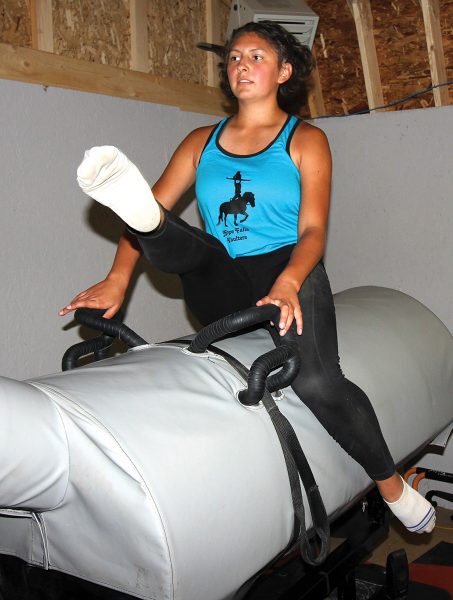
Vaulting judge Mark Griffiths describes the contrast between practicing on stationary equipment versus a living horse as “the difference between working on a dry noodle versus a wet noodle.”
Freedom of movement is critical to vaulters and different from other riding disciplines. Footwear is gymnastics/trampoline shoes or vaulting specific shoes. Did you notice there was no mention of headgear? Hats and helmets obstruct vision, can snag on the surcingle, and could even hit a teammate when sharing space on a horse.
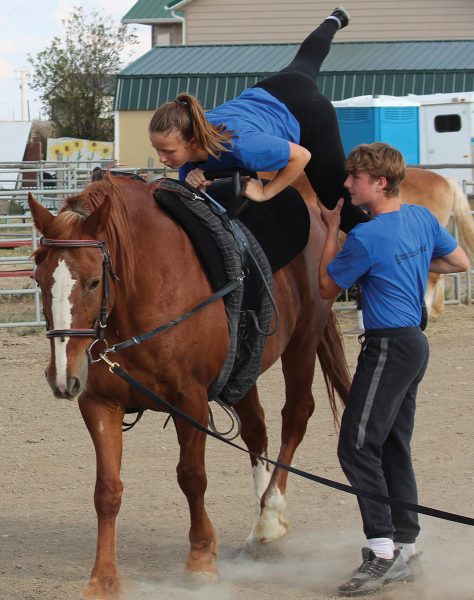
A vaulting surcingle sits atop a strong, molded pad of thick, durable foam equivalent to two heavy riding pads. What a vaulting surcingle doesn’t have is stirrups, making mounting a move to master. A single vaulter runs alongside the horse inside the circle while holding the handles of the surcingle, then jumps on both feet, with the leg that will be on the outside swinging up as high as possible, using timing and momentum from the moving horse to mount. This move should look graceful, with a straight leg and soft landing.
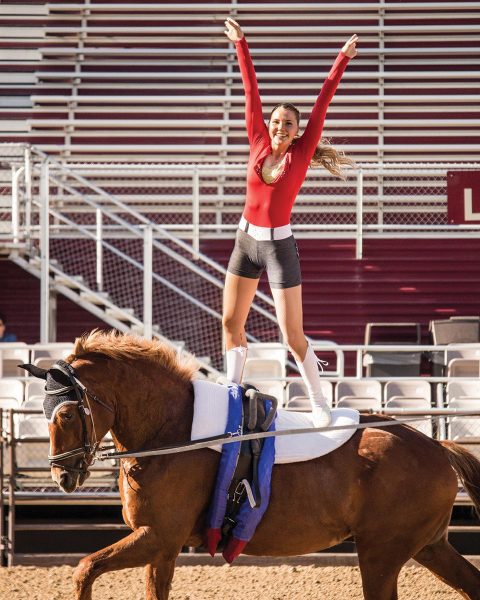
A dual mount involves the person mounting and a teammate. Moving beside the horse, both count to three together, with the person mounting jumping on three as the helper lifts.
Position and Movements
The absence of stirrups is another significant difference between riding and vaulting. When riding in a saddle, you keep your heels down so your feet stay securely in the stirrups.
Foot position is also key to success in vaulting, but without stirrups, there’s no reason to drop your heels. Vaulting positions usually require participants to point their toes to hug or wrap the horse, giving better stability and form.
When competing in an equitation class, are you only judged on your stop? Of course not—you need to ride the entire class as best you can. It’s the same for vaulters: Judges are scoring not only on the final position, but the entire process of getting to that position.
The box is a hands-and-knees position atop the horse. While holding on to the grips, you swing softly from riding astride to your knees to form a box. To make a good box, your elbows are bent slightly so your shoulders are no higher than your hips.
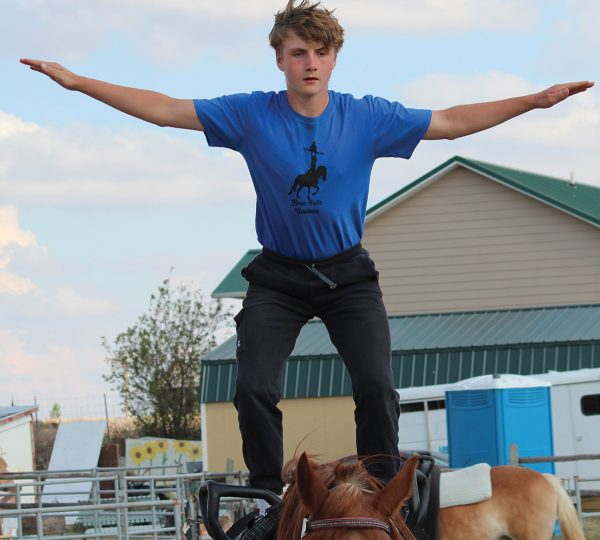
From the box, you can move to the half flag, with your right leg extended and your left leg providing support using an angled, pointed left foot to provide maximum stability. As your vaulting skill develops, you raise your left arm to complete a full flag. The tip of your hand and foot should be as high as your head.
The half mill or full mill is a move that changes your seated position from forward to sideways to backward, with the full mill taking you back to the starting position (think of an “around the world”). During the leg passes, your legs are held straight with toes pointed.
When your legs are on the same side of the horse, they are together with toes pointed toward the ground. Grips on the vaulting surcingle are released as necessary to let your leg move to a new side. When in competition at a trot or canter, each leg movement is performed in four strides, taking eight strides for a half mill.
Vaulting Competition and Benefits
Interested in competing in vaulting? You must perform compulsory exercises, which vary with type and difficulty depending on your competition level. The beginning “D” compulsories can be performed at a walk or trot, and include moves like the box, mill, kneel, and planks. They form the basis for other moves, so doing them correctly will help you succeed.
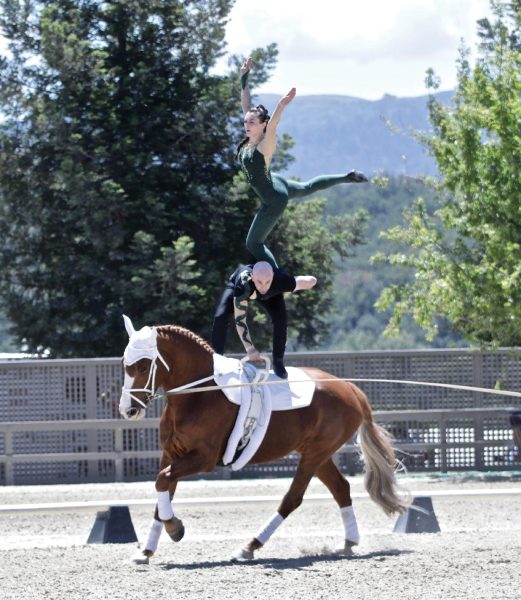
Vaulting can be used as therapy for adults and children with balance and motor skill challenges. Want to be a better rider? Vaulting also benefits any equestrian looking to improve their riding ability, core strength, flexibility, and balance. It also helps you develop an independent seat and achieve harmony with your horse.
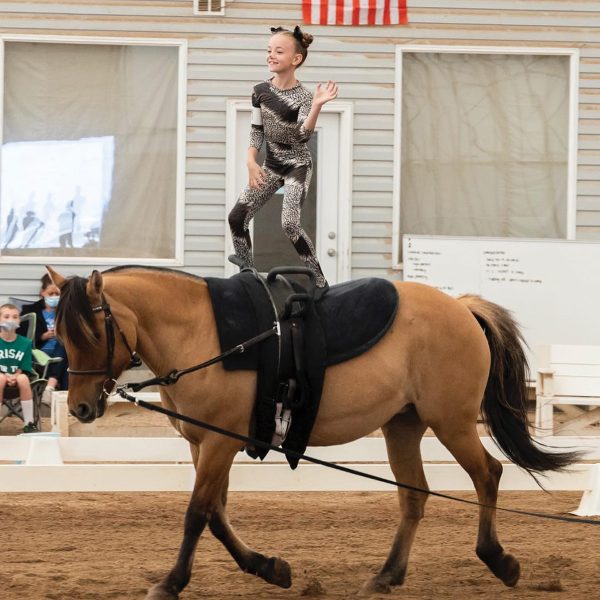
So give vaulting a try and become a better equestrian—all while having a blast. And maybe, just maybe, do a backbend on a moving horse.
Want to try vaulting? Find a club near you by visiting equestrianvaulting.org.
This article about vaulting appeared in the May/June 2023 issue of Young Rider magazine. Click here to subscribe!


